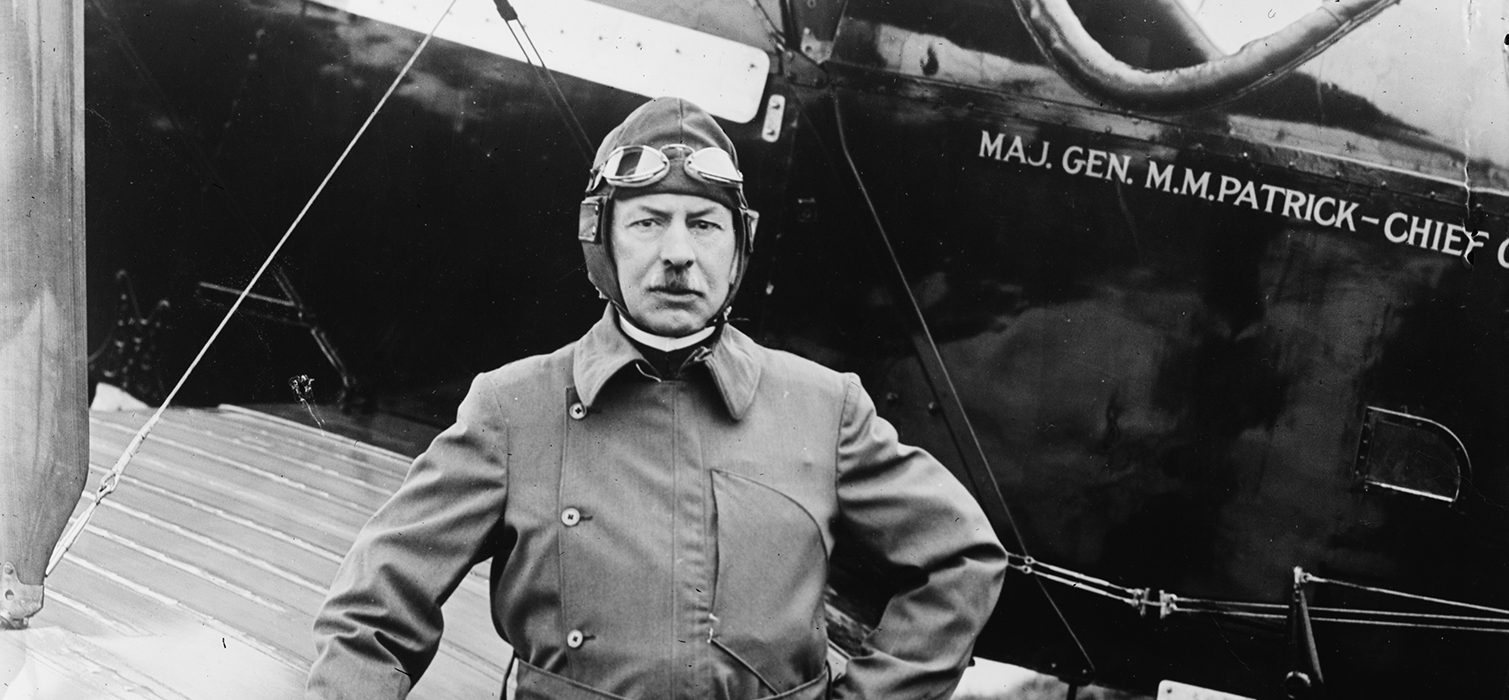The unusual assignment as head of military aviation.
Patrick was the first real head of American military aviation. He was an engineer for most of his career, and had a reputation as a solid administrator and organizer. He also had a strong personality and kept a firm grip on his subordinates and his unit. It was therefore not too surprising when Gen. John J. Pershing, commander of the American Expeditionary Force in France, tapped him for an unusual assignment in May 1918.
The U.S. Army had bought its first airplane in 1909, but less than a decade later the air arm had burgeoned into a large and complex combat organization in France. The Air Service was young, and more to the point, so were its leaders. The two most capable and forceful of these young aviators were Billy Mitchell and Benjamin Foulois. Thrown together in France, the two could not get along. Pershing told Patrick that those in charge in the air arm were “running around in circles.” He wanted Patrick to make them go straight.
Patrick took over and quickly imposed order. He put the more dynamic and charismatic Mitchell in charge of operations, and the orderly and conscientious Foulois in charge of logistics and training. It worked. When the war ended, Patrick reverted to his permanent rank of colonel and returned to being an engineer. He planned to retire.
Not so fast. Mitchell had returned to Washington as the Deputy Chief of the Air Service. He had not become any more tactful. His boss was Maj. Gen. Charles Menoher, an infantryman. Like many, Menoher had difficulty controlling Mitchell, so Pershing, now Chief of Staff, recalled Patrick from the Corps of Engineers, gave him back his two stars, and put him in charge of the Air Service. Once again, Patrick’s measured but strong personality proved successful. In his memoirs, Patrick tells how Mitchell came to him on his first day of office and proposed a reorganization of the Air Service, one that would essentially put him in charge of everything with the Chief left as nothing but a figurehead. Patrick said flatly that his plan was unacceptable. Mitchell threatened to resign. Patrick took him down the hall to speak to the deputy chief of staff so he could personally turn in his papers. Mitchell backed down.
The two worked together reasonably harmoniously for the next four years. Patrick recognized his subordinate’s many impressive qualities—his creativity, initiative and leadership ability, but he also realized that his enfant terrible needed a strong guiding hand. It was only after Mitchell left Patrick’s control that he blundered into trouble he could not handle.
Although coming to aviation late in life—he learned to fly at age 59—Patrick soon recognized the potential of the air weapon. In this sense, Mitchell rubbed off on him, but of course, Patrick was far more astute and tactful. Quietly, and without fanfare, he pushed the cause of airpower behind the scenes. Although postwar financial strictures made it difficult to expand the size and capabilities of the air arm—a problem shared by the other military branches—he nonetheless put his service on a sound administrative footing, while also reorganizing its engineering side at McCook Field, Ohio. More importantly, he realized that if airpower was indeed a new way of waging war and not just another weapon to be used in a traditional manner, then Airmen had to be educated on its special and unique qualities. He therefore gave full support to the Air Service Tactical School that had been established by Mitchell.
Patrick’s most important achievement was his support of the Air Corps Act. Passed by Congress in July 1926, the legislation was a milestone for the Air Service. Besides changing the name to the Air Corps, and thus equating it to the other combat branches, the act had other significant provisions. The size of the air arm was to increase to 1,800 airplanes with 1,650 officers and 15,000 enlisted men. It authorized the temporary promotion of air officers, keeping their career progression in line with their contemporaries in other branches. Two more general officer positions were allotted to the Air Corps, and enlisted men were given more pay for mechanical qualifications. Only flying officers would command flying units, and more Airmen were detailed to the General Staff. Finally, it called for an Assistant Secretary of War for Air. This civilian position put air matters at a significantly higher level in the War Department.
Patrick retired the following year. Combined with his tenure during the war, Patrick served as commander of the Army’s air arm for over seven years. During those years that air arm found its footing and became a force in American military affairs.
Patrick’s memoir, The United States in the Air (Doubleday, 1928) is workmanlike but bland. The biography by Robert White, Mason Patrick and the Fight for Air Service Independence (Smithsonian, 2001), is excellent.
